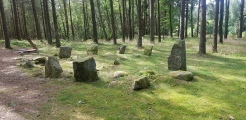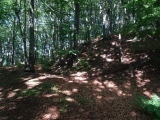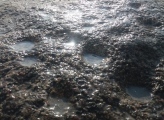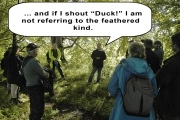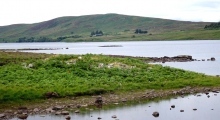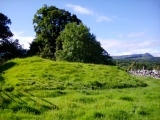Andy Burnham's Blog, page 189
August 24, 2020
Gunnarstorp Standing Stones
Gunnarstorp standing stones are part of a large Bronze Age and Iron Age burial site located along route 110 on the Oldtidsveien or 'prehistoric road' between Skjeberg and Fredrikstad in Norway. There is a sign along this road which leads you up a gravel lane to a car park from where you can walk uphill past standing stones and other stone settings which interestingly reflect the spirals seen in some nearby rock carving sites, then on past Gunnarstorp Cairn which is a massive 30 metre across and 3 metre high Bronze Age burial cairn. Continuing through the trees on a path for a further 350 metres you reach Gunnarstorp standing stones and burial site.
Published on August 24, 2020 12:45
August 23, 2020
Quinloch Muir Stones
These stones near Blanefield to the north of Glasgow are located about 15 minutes north of a hillfort in the middle of the muir. They seem to be in a circle, consisting of 6 main stones, 5 of which are fallen or angled against the only upright. This last has a scalloped top very similar to the main upright at the Duntreath standing stones nearby at Dumgoyach. There is no record of these standing stones either on the main OS maps or the Canmore site. This area of the Muir is ancient and has not been farmed in a very long time indeed judging by the high tussocks of moss. Also, and more importantly, I noticed a rounded fern-covered feature some 100 yards from the stones. This stood out on the Muir and after inspection turns out to be a possible chambered cairn - again unmarked or recorded.
Published on August 23, 2020 13:32
August 21, 2020
Grodzisko Poznachowice Górne
Hillfort in Malopolskie. A massive hillfort occupies the summit of Góra Grodzisko (618 m of altitude) located east of the village of Poznachowice Górne. The site was occupied by people of Lusatian culture in Hallstatt period (750-400 BC), and later in La Tene and early medieval periods. Multivallate earthworks survived in good condition and are among the most impressive in Carpathian mountains. East of the hillfort, where the approach is easiest, the ridge is cut by another rampart and ditch.
Published on August 21, 2020 15:02
Näpfchenstein im Parsteinsee
Cup-marked stone in the shallow water zone of the Parsteinsee at the second bathing area of the campsite E 24. The 1.7 m wide and 0.97 m high stone protrudes above the water surface and has about 40 cup-marks on its surface.
Published on August 21, 2020 05:13
August 19, 2020
Leshan Giant Buddha
This giant Buddha statue in China has had its toes dampened by floodwater for the first time since the 1940s, more details in the comments on our page. The Leshan Giant Buddha is a 71-metre (233 ft) tall stone statue, built during the Tang Dynasty. It was carved out of a cliff face that lies at the confluence of the Minjiang, Dadu and Qingyi rivers in the southern part of Sichuan province in China, near the city of Leshan. The stone sculpture faces Mount Emei, with the rivers flowing below his feet. It is the largest stone Buddha in the world and it is by far the tallest pre-modern statue in the world.
Published on August 19, 2020 10:01
August 14, 2020
MegPortal Online Zoom chat, this Sunday 16th Aug @ 8pm UK time
A chance to meet some of the faces behind the scenes, fellow members and contributors. Megalithic Portal Founder Andy B will start things off by answering any questions you may have about the site and what we do then it's open to you to talk or just listen. (Pic: One of our past 'in the flesh' meetings - fewer safety precautions needed this time!)
Published on August 14, 2020 07:55
August 12, 2020
Pompeiopolis
Archaeologists reach the inner walls of a memorial tomb of the ancient Greek didactic poet Aratus in Turkey. Ancient city founded about 700 BCE as Soloi 11 km west of Mersin and renamed by the Roman general after the defeat of local pirates. Only a few columns from this period are left.
Published on August 12, 2020 10:14
August 11, 2020
Coill'Ach A' Chuil Broch
The remains of a broch, situated on a spit of land projecting into Loch Naver, having an outwork and a causeway on the landward side. The broch originally measured 52ft over a wall 12ft wide at the entrance on the SE. Walling is visible only for a short distance to the north of the entrance, but the stones appear to have been very large.
Published on August 11, 2020 10:44
August 9, 2020
Pentre Farm Barrow
Situated immediately adjacent to Pentre Farmhouse near Llanelltyd, Gwynedd, this impressive mound measures 22m in diameter and it is 2.8m tall. Partially excavated in 1871 it revealed burnt bone, structural features and artefacts that included spindle whorls and lead and bronze objects. Although constructed for burial and ritualistic purposes in the Bronze Age further artefacts recovered from the site also indicate that it was used in the early medieval period, i.e the latter period of the first millennium.
Published on August 09, 2020 09:33
August 8, 2020
Percy Cross Rigg Settlement
This settlement in North Yorkshire consists of the remains of five Iron Age hut circles which have both internal and external hearths, surrounded by drainage ditches and a cooking pit to the north of hut B. Air photography also shows that it lay at the mid point of the western side of a rectangular field 300ft in length that will be associated with it. It lies about 500 yds. to the south east of Percy Cross and immediately to the east of the road which runs along the rigg. The road sits on what is almost certainly an ancient prehistoric route, settlements and various earthworks along and either side of this route are evidence of this, in mediaeval times it ran from Guisborough to Westerdale and was known as the Ernaldsti.
Published on August 08, 2020 14:08

